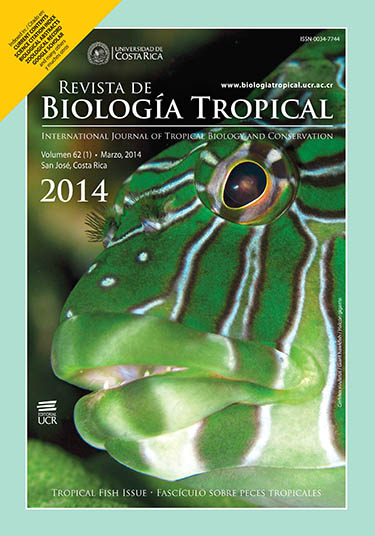Abstract
Pleurodema guayapae is a species that inhabits saline environments and semidesert zones from central Argentina. To date, the knowledge about the reproductive biology of this species is very poor, and our aim is to contribute to its knowledge with the description of some important reproductive aspects. For this, field work was undertaken in an area near to Patquía, La Rioja province. Sampling was undertaken during three summer periods (2006-2007; 2007-2008; 2008-2009) in Chamical-Patquía area, where we could find reproductively active populations. We observed and described breeding sites, type of clutch, process of foam nest construction, clutch and egg number and sizes, and hatching time and stage. Behaviour observations were performed from the time that males began to call until the pairs ended up the foam nests building, and layed the eggs. Additionally, one amplected pair was observed and filmed in the process of foam nest construction, and four amplectant pairs were collected and separatelly placed in plastic containers, for nests observations in the laboratory. Hatching time was based on three different foam nests of known age. We found that P. guayapae populations were acoustically active only after a rainfall. Its breeding sites were represented by ephemeral ponds of fresh water, product of rains. The males emitted their calls inside or outside these ponds. A detailed description of the foam nest construction process by both females and males was made. The clutches were in dome-shaped foam nest type of 6-9cm in diameter and 1-3cm in height, some of which were in communal nests. The nests had an average of 1 137 pigmented eggs. This species showed a short hatching time. Our results allow us to conclude that this species should be considered an extreme explosive breeder. Our results are discussed with others obtained for related species.Comments
Downloads
Download data is not yet available.






